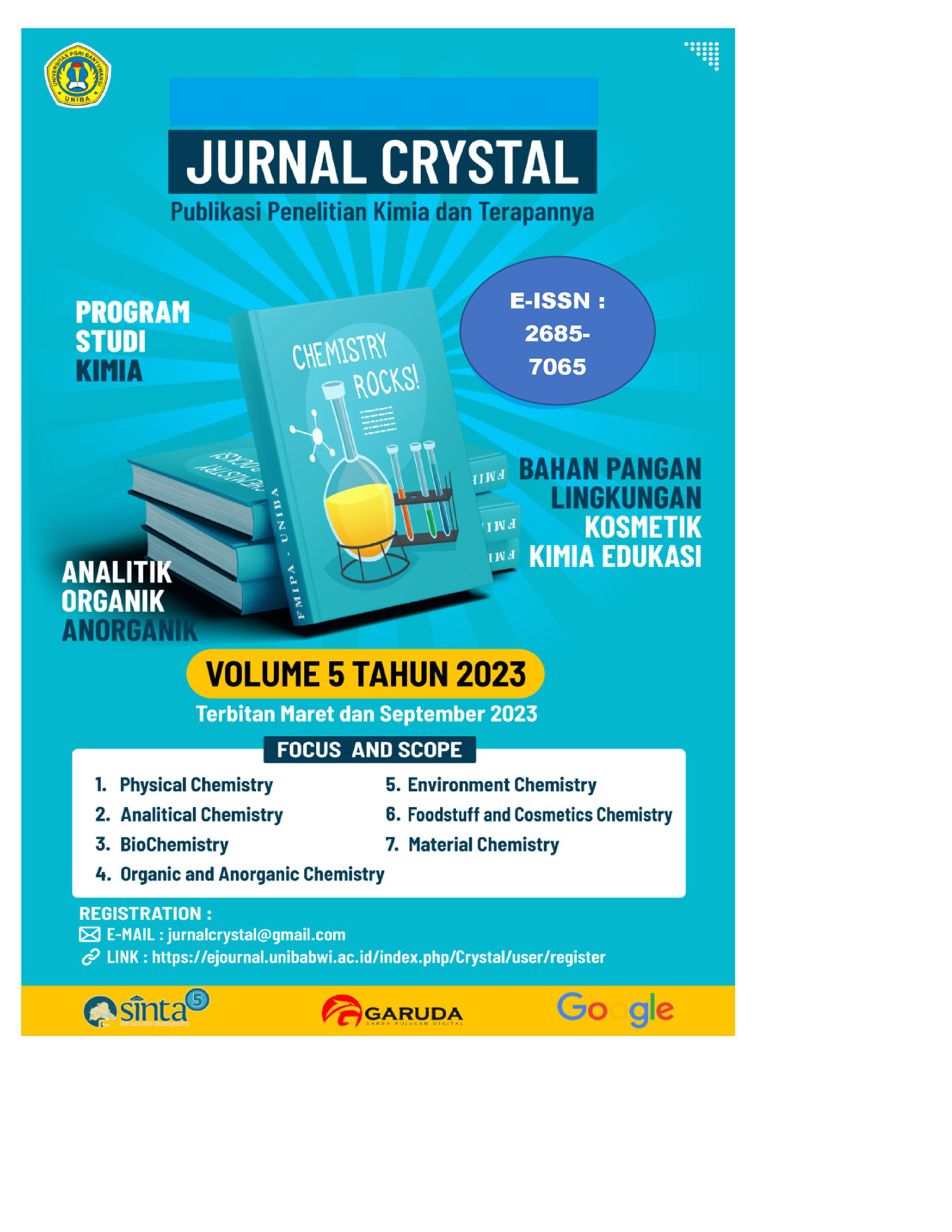RECOVERY TEMBAGA DARI LARUTAN TEMBAGA SULFAT MELALUI METODE SEMENTASI MENGGUNAKAN BESI
DOI:
https://doi.org/10.36526/jc.v5i2.3086Keywords:
Recovery, Copper, Iron, Copper Sulfate, CementationAbstract
This study aims to optimize the copper recovery process from copper sulfate solution using the cementation method with iron as the precipitating agent. This method offers an efficient and sustainable solution to address the challenges of copper recovery from copper sulfate solutions, which has become increasingly crucial due to the declining supply of high-grade copper ore. The variables optimized in this research encompass the optimization of stirring speed (50 RPM to 300 RPM), iron addition (0.5 to 3 times the stoichiometric reaction), temperature (30 to 70°C), and reaction time (15 to 120 minutes). The research results indicate that the optimal conditions for copper recovery are achieved at a stirring speed of 200 RPM, iron addition of 2 times the stoichiometric reaction, a temperature of 70°C, and a reaction time of 120 minutes. Under these conditions, the percentage of copper recovery from the copper sulfate solution using the cementation method reaches 99.37%, demonstrating a high level of efficiency in this approach.
References
Bisztyga-Szklarz, M. et al. (2021) ‘In situ regeneration of copper-coated gas diffusion electrodes for electroreduction of co2 to ethylene’, Materials, 14(12).
Dávila-Pulido, G.I. et al. (2020) ‘Copper removal from a cyanidation liquor by electrowinning using batch and continuous flow cells.’, Canadian Metallurgical Quarterly, 59(1), pp. 17–25.
Harichandan, B. and Mandre, N.R. (2021) ‘Studies on the potential recovery of copper from low-grade mixed sulfide-oxide ore and optimization of the process parameters’, Separation Science and Technology, 57(5), pp. 719–732.
Hayes, P.C. and Gray, P.M.J. (1985) Process Selection in Extractive Metallurgy. Australia: Hayes Pub. Co.
Jena, S.S. et al. (2022) ‘Sustainable Use of Copper Resources: Beneficiation of Low-Grade Copper Ores’, Minerals, 12(5).
Kamberović, Ž. et al. (2018) ‘Hydrometallurgical Process for Selective Metals Recovery from Waste-Printed Circuit Boards’, Metals, 8(6).
Kim, G.-H., Hong, H.-S. and Jung, H.-C. (2012) ‘Recovery of Copper Powder form MoO 3 Leaching Solution Using Cementation Reaction System’, Journal of Korean Powder Metallurgy Institute, 19(6), pp. 405–411.
Luo, W.B., Wang, J.K. and Yin, G. (2018) ‘Study on copper kinetics in processing sulphide ore mixed with copper and zinc with sulfuric acid leaching under pressure’, IOP Conference Series: Materials Science and Engineering, 303(1).
Nurtazina, N.D., Azhigulova, R.N. and Uvarov, N.F. (2022) ‘Glycine leaching kinetics of chalcocite in alkaline medium in the presence of hydrogen peroxide’, Chemical Journal of Kazakhstan, 78(2), pp. 16–25.
Shin, D.J. et al. (2021) ‘Study for Seperation Process of Copper from the Low-grade Copper Ore by Hydrometallrugical Process’, Resources Recycling, 30(5), pp. 57–66.
Shishkin, A. et al. (2018) ‘Cavitation-Dispersion Method for Copper Cementation from Wastewater by Iron Powder’, Metals, 8(11).
Subagja, R. (2014) ‘PENGENDAPAN TEMBAGA DARI LARUTAN TEMBAGA SULFAT DENGAN CARA SEMENTASI MENGGUNAKAN BESI’, Metalurgi, 29(2), pp. 161–170.
Subagja, R., Setiawan, I. and Rhamdani, A.R. (2021) ‘Copper dissolution into the aqueous sulfuric acid solutions from printed circuit board waste sludge’, PROCEEDINGS OF THE 4TH INTERNATIONAL SEMINAR ON METALLURGY AND MATERIALS (ISMM2020): Accelerating Research and Innovation on Metallurgy and Materials for Inclusive and Sustainable Industry, 2382.
Wang, H. et al. (2022) ‘An experimental comparison: Horizontal evaluation of valuable metal extraction and arsenic emission characteristics of tailings from different copper smelting slag recovery processes’, Journal of hazardous materials, 430. A
Wang, L., Cheng, W.C. and Xue, Z.F. (2022) ‘The Effect of Calcium Source on Pb and Cu Remediation Using Enzyme-Induced Carbonate Precipitation’, Frontiers in Bioengineering and Biotechnology, 10.















